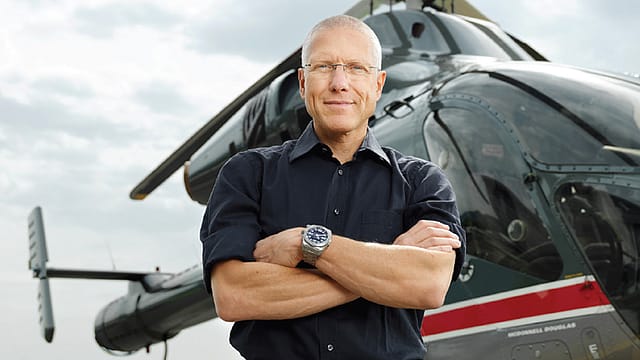Making the best of hard times
ADVERTISEMENT

Jean-Paul Girardin, vice president of Swiss watchmaker Breitling, talks to Fortune India about navigating the industry’s 20-month downturn, collaborating with Rolex, and why the aviation-themed brand won’t deviate from making “tool watches”, which are designed to do more than just tell time. Edited excerpts:
These are tough times for the watch business, with the slowest growth ever since the quartz crisis of the 1980s. How are you tackling it?
Breitling has the right products, good after-sales service, and great distribution. We have 47 boutiques globally and opened our first one in Switzerland only last year. In India [operations started in 2007], we have a boutique in Kolkata [besides retailers in other cities]. We are lean and quick to respond to changes, but we have a vision to stay true to our history.
Collectors either hate or love Breitling because its portfolio consists mostly of large, chunky sports models. Have you ever thought of a dress watch for the Indian market?
Every market has its nuances. In Japan, they like the details of the details. India likes slim gold watches, but most of our products are chronographs. If they are below [a dial size of] 38 mm, they lose legibility. So our watches are big and thick. Because of the functions that our watches offer, most of our customers are men. We don’t want to dilute that too much, as it underpins our success.
Many dealers and collectors say that storied brands don’t make watches of the class they used to earlier. There’s more machine finishing than hand crafting. Why is it so?
In part, that’s what the market wants. Take LumiNova, the pigment used to illuminate the hands and the markings on watches. Buyers want it applied in the right proportions and you can’t beat a machine in that. But something like regulating a balance wheel is still done by hand, which is why our chronometry department has 200 people, not two people and 20 machines.
December 2025
The annual Fortune 500 India list, the definitive compendium of corporate performance, is out. This year, the cumulative revenue of the Fortune 500 India companies has breached $2 trillion for the first time. Plus, find out which are the Best B-schools in India.
Breitling recently tied up with Rolex-Tudor—a first for both brands. Tell us more.
The B20 calibre that powers our Superocean Heritage II is derived from Tudor’s MT5612 calibre. Similarly, the MT5813 calibre of the new Tudor Heritage Black Bay Chronograph is derived from Breitling’s 01 chronograph movement and topped up with a component that Tudor made. The goal is to share expertise in design and production of movements.
Breitling’s latest model, the Navitimer Rattrapante, is quite a challenge in terms of construction and adjustments. In layperson terms, what’s the functionality it brings?
It’s a split-second chronograph which can simultaneously record different legs of time, say, when two planes are competing in an air-race.
